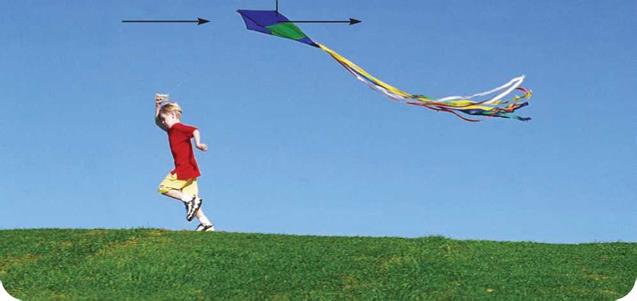Aerodynamics
|
A |
erodynamics is a branch of science that deals with the behavior of moving gases and how they affect objects passing through them. Designers use their knowledge of aerodynamics to make aircraft and rockets the right shape.
The word aerodynamics comes from two Greek words. The first word, aer, means “air.” The second, dunamis, means “force.” Aerodynamics, therefore, means “force from air.”
Aerodynamic Force
When an object moves through air, it generates aerodynamic force. The size and direction of the force depend on the size, shape, and speed of the object.
The level of force also depends on the physical properties of the air, such as its pressure and temperature.
It does not matter whether it is the object that is moving or the air that is moving. Air flowing around a stationary object generates aerodynamic force, too.
A kite flies because of the force generated by the wind blowing around it. The aerodynamic force that acts on a kite has two parts. These parts are called lift and drag. Lift takes the kite upward, and drag pulls it backward in the direction that the wind is blowing. The kite does not fly away because these forces
О Two aerodynamic forces operate on a kite as it moves through the air. The movement creates lift, which raises the kite up, and drag, which pulls the kite back.
|
|
|
|
|
|

are balanced by the tension in the kite string. Kites often have a long tail. The tail has a purpose-it is there for aerodynamic reasons. The drag it creates keeps the kite facing in the right direction.
Airplanes also generate lift and drag when they move through air. Lift operates at right angles to a plane’s direction of flight. When the plane is flying straight and level, the lift generated by its wings acts straight upward. Drag operates in the opposite direction to a plane’s motion. When the plane is flying straight and level, therefore, drag pulls backward.
Two other forces act on every powered airplane. First, thrust generated by its engines pushes the plane forward. Second, the plane’s weight pulls the plane downward. For an airplane flying straight and level at a steady speed, these forces are perfectly balanced.










